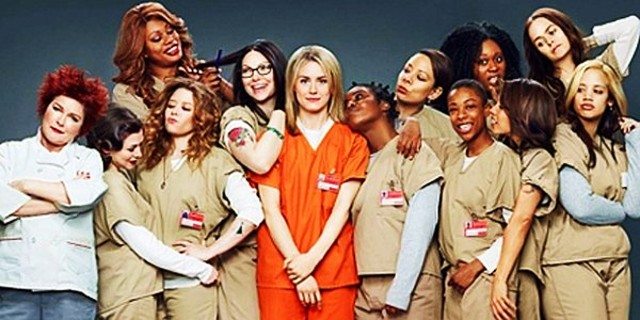The GLAAD Report: “Representation matters. Fact.”
Representation matters. Fact. GLAAD, an organisation dedicated to improving equality and diversity within popular media, recently produced their annual research publication into the statistical presence of LGBTQ and non-white characters on American television in 2016-2017.
On the surface, the findings appear to yield encouraging results. According to the report, out of 895 series regular characters expected to appear on broadcast scripted primetime programming in the coming year, 43 (4.8%) were identified as part of the LGBTQ community – the “highest percentage of LGBTQ series regulars GLAAD has ever found”.
But a closer look reveals that there are still hurdles facing the quality of representation. Whilst GLAAD reports that 20% of regular characters appearing in the 2016-2017 season will be black, “black women remain underrepresented with only 69 (38%) black characters being female”.
In other words, a mere 7.6% of all regular characters appearing on primetime television will be black women. Further disappointments include the lack of representation of asexual, aromatic, and transgender characters – particularly of colour. GLAAD also establishes that of these 20% of black characters, many of them are victims of negative racial stereotypes.
A stark lack of intersectionality is also evident. Whilst the general sweeping representation of LGBTQ characters on network, cable, and streaming services are seeing a steady increase, the percentage of these characters of white ethnicity stands at 58%, 72%, and 71% respectively.
Writing teams need to be diversified in order for authentic story-telling and the crafting of LGBTQ and ethnically diverse characters with complex identities.
Black, Latino, API and Multiracial members of the LGBTQ community are currently being left sorely underrepresented. Consider the previous statistic showing that 7.6% of regular characters on primetime television in 2016-2017 are black women- the percentage of these characters also belonging to the LGBTQ community is extremely slim.
But how can the industry can move forward to tackle this issue? The obvious answer seems to be that an increase in LGBTQ and racial diversity within writers’ rooms is of grave necessity for any progress to be made. Writing teams need to be diversified in order for authentic story-telling and the crafting of LGBTQ and ethnically diverse characters with complex identities. Their characters should legitimately represent members of minority communities, rather than two-dimensional presences created for the sole purpose of fulfilling a quota.
This lack of diversity within writing teams is becoming increasingly transparent, as the treatment of characters who are presented as LGBTQ or non-white, are often victims of disappointing tropes or inaccurate cultural research.
Orange Is the New Black has failed on this front. In the USA, 30% of women’s prison inmates are black and 16% are Latina. Whilst the series does tell the stories of racially diverse and often LGBTQ inmates, its writing staff, up until recently, has been almost exclusively white. How is it possible that honest stories from women of colour that deserve to be voiced are written by white writers, when members of these communities are struggling to break into the writing industry?
This lack of diversity within writing teams is becoming increasingly transparent, as the treatment of characters who are presented as LGBTQ or non-white, are often victims of disappointing tropes or inaccurate cultural research.
One such trope that came to the forefront recently is the “Bury Your Gays Trope”, which involves the death of lesbian characters most often as a means of progressing others’ storylines. Examples include Root (Person of Interest), Poussey (Orange Is the New Black) and Lexa (The 100) This is indicative of a severe lack of understanding or genuine investment in these characters as individuals, as opposed to plot devices.
Although GLAAD’s 2016-2017 report seems to imply a step forward in regards to the diversification of the stories and characters on our screens, many more need to be made in order for minority representation in television to actually represent these communities and individuals in a way that is true to their real life experiences that have long deserved a voice.

Comments